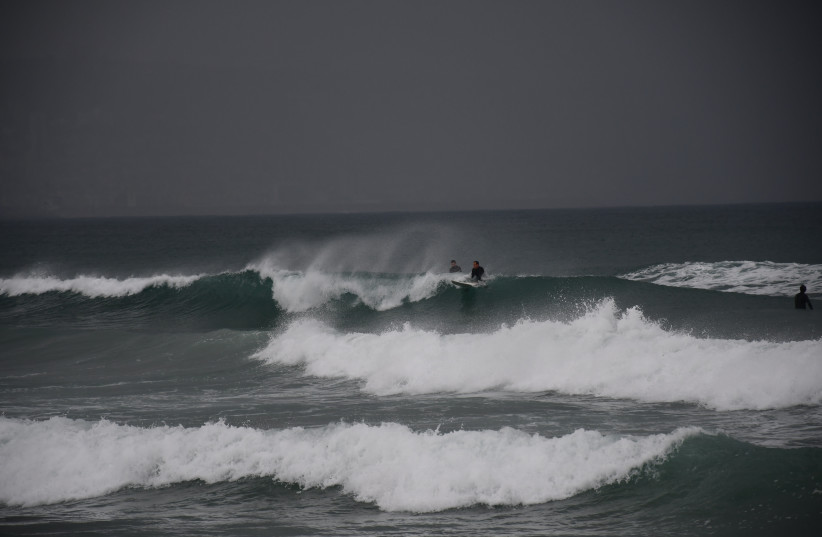Rain and cold lashed the coast of Israel on Saturday. Haifa Bay was deserted save for a group of surfers and fishermen who decided to go down to Kiryat Yam to see if they could take advantage of the weather.
The North has been under constant threat of Hezbollah attack since the launch of dozens of rockets, as well as drone mortar and anti-tank missile fire, directed at border communities over the last two months. Last week an Israeli civilian was killed in Mattat, a community near the Lebanon border.
A trip to the north
I drove up north for Shabbat. On Saturday I approached the border region from where 40 Israeli communities were evacuated in October. These included small locales on the border itself, many of them on the heights overlooking Lebanon, a stone’s throw from the border fence – villages such as Shtula, whose residents, mostly Jews of Kurdish origin, were evacuated.
Nevertheless, Hezbollah has continued to target these areas, firing at the communities and targeting cars that approach the border. They also target IDF forces.

The evacuations affected all the communities along the border, from Kiryat Shmona, a city of some 23,000, to Rosh Hanikra on the coast.
As one approaches this area the military presence is clear; there are more checkpoints and shelters on the road. The area feels ghostly, the low hanging clouds and rain contributing to this feeling. The threat to the North has significantly changed areas that rely on tourism. Businesses are shuttered and livelihoods have been challenged.
I drove from Nahariya toward Rosh Hanikra, stopping to walk on the beach. Some people came up here to exercise and search for shells deposited by the storm. Some people were fishing.
Inland, toward Shlomi, there was no traffic. The northern town was targeted by rocket-fire last spring during Passover, foreshadowing what was to come after October 7. Other communities here, such as the hilltop Bedouin community of Arab al-Aramshe, are constantly under threat.
The hills have also been scorched since the October 7 Hamas massacre, apparently from rocket and mortar fire.
Just a few kilometers away, life goes on in Yarka
I turned around to head to Yarka, a large Druze town. Far enough from the border to be unaffected by most sirens and the evacuations, Yarka was bursting with shoppers and one long traffic jam in this holiday season here, amid displays of Santa Claus posters and Christmas ornaments.
Yarka is famous for a giant kid’s store called MyBaby, a multi-floor shopping center full of toys and arcade games. Stores sell almost anything one might want. With no sense of threat from the North, it shows how life goes on just a few kilometers from deeply affected areas.
On Saturday, sirens wailed near Metulla and also in Elkosh in the northern Galilee, but in general the day passed quietly despite increased threats since the war resumed in Gaza last week and Hezbollah has published names of its latest casualties.
Saturday night, the IDF reported that “a short while ago, a number of launches from Lebanon toward several areas in northern Israel were identified; no injuries were reported.”
The announcement said that “The IDF is responding with fire toward the sources of the fire. Furthermore, a short while ago, in response to the launches from Lebanon throughout the day, an IAF fighter jet struck a Hezbollah operational command center in Lebanon.”
